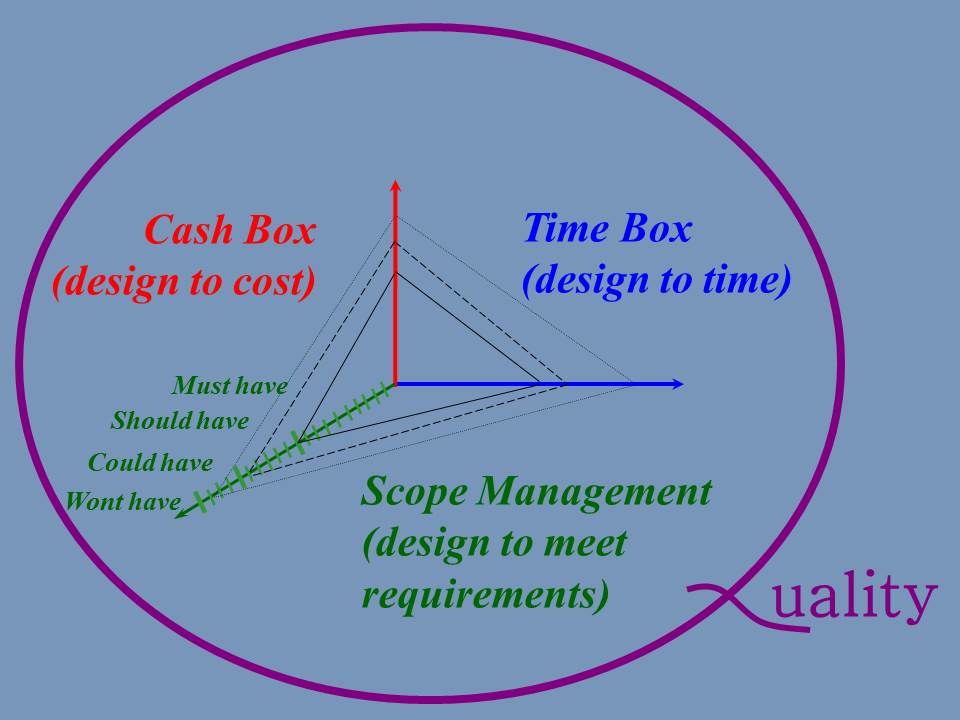Other versions contain resources, risk, performance, and more, making it a hexagon, or perhaps a tetrahedron. Ultimately, the exact form of the so-called ‘triple constraint’ is less important than the fact that there are trade-offs.
This is not a theoretical reflection, but a consideration about what could happen in practice. In fact, it all depends upon the definition of quality. Either the most suitable scope-time-cost combination determines quality, or the quality-time-cost equilibrium defines scope.
If quality is defined in terms of customer satisfaction and meeting or exceeding customer expectations (as per ISO) then quality embraces time and cost, as well as scope. If quality is about compliance with a specification of requirments within budget and on time, then scope covers quality, time and cost.
To satisfy a customer is not to produce a perfect product, but late and over-priced, or to produce the wrong product before the deadline, but cheaply, or the right product on time but at a price no-one can afford. To satisfy a specification of requirments that has been misconceived, or misunderstood, by some of the partners, is not a successful outcome even when it is contractually irreproachable.
An impact on scope, for example, either more or fewer requirments will almost certainly have some kind of impact on the time taken, which will knock on to cost. The inverse is not necessarily true. Prices or exchange rates, for example, can change without any commensurate impact to the schedule, whilst the schedule can slip without modifying scope.
The main reason that leads me to prefer the scope-time-cost triangle is because higher quality does not always imply higher cost. Sometimes, fewer features give a better fit with the customer need, whilst also costing less. Indeed, cheap and quick may be the customer preference, as in many low cost products, rather than waiting for features that provide little added value to the core product.
There are products where cost is embedded as the essence of ‘quality’. It would be entirely inappropriate to suggest an expensive ‘low-cost’ air fare, ‘economy’ car or ‘budget hotel’.
Similarly, there are products for which even the slightest degree of lateness would invalidate any notion of quality: a late ticket for the cup final, today's newspaper delivered 3 days late, a perfect weather forceast (to tell you that it rained yesterday), a gift late for an anniversary.
Here is another version of the triple constraint: 
A more extensive reflection on the "
critical triple constraint" and the ways in which projects can be managed according to the priorities established between scope, time and cost also introduces the idea of "critical purpose".